Santiago and Lima
It’s been more than a month since we left Santiago for the final time. I’ve been meaning to write something about how things were there but have been finding it quite difficult. Part of that, I think, is the contrast between Santiago and its messier neighbour to the north, Lima. I don’t want to damn Santiago with faint praise, but it’s hard to summon up a huge amount of enthusiasm for the place. That’s not because we had a bad time, at all - we went on long walks through city parks; the public transportation is efficient and cheap; the weather was warm and dry with brilliant sunshine (but not too hot); and pisco sours are plentiful and inexpensive. Rather, I think that we stayed a little bit longer than would have been ideal: a couple of weeks would have been great, but three was a little too much.
One reason we didn’t get out too much in Santiago was probably that we needed some time to adjust after Morocco and Kenya, and especially to recover after the marathon flight from Nairobi. We had a pretty nice AirBnB in a pretty nice area of town - walking distance from both Lastarria and Barrio Italia - and spent most of the first week staying at home. We got out for a few walks, and then realised over the rest of our time in Santiago that we’d walked past most of the interesting places in our first couple of days there.

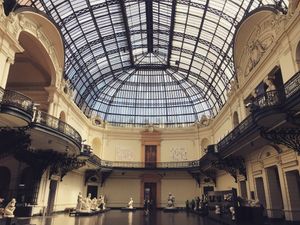
Lima, on paper, should come out much worse: it’s constantly overcast and humid (even though it hardly ever rains: thank the Humboldt Current for that); the public transport is much more limited; and quite a lot of the whole city smells of piss. (Not sure whether it’s canine or human, but I’d guess both, after seeing the number of (a) stray dogs and (b) signs prohibiting orinando en la calle). However, we loved the place. We messed up our apartment reservation and so stayed in the wonderful Casa Falleri hotel in Barranco for our first two nights, before moving up the road to the apartment for three straight weeks. This actually turned out very well: the hotel organised a car to pick us up at the airport, and the staff fed us drinks and told us all about the neighbourhood so we had an idea of where to go and what to do. After moving out, I would actually plan routes to avoid walking past the hotel, as it got too embarrassing for me to keep having to have little daily conversations with the front desk guy telling him how we were getting on.
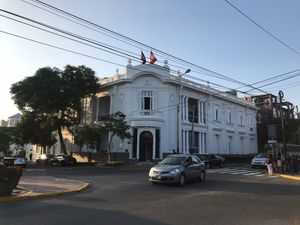
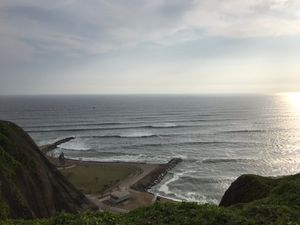
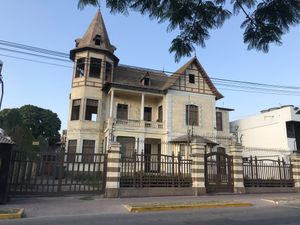
I noticed the first big change when crossing the road straight outside the hotel: in Santiago all the motorists are unusually considerate, and will sometimes unilaterally slow down if they think you’re about to cross the road. Lima is much more aggressive: even if there’s a red light in your favour and you’re on a well-marked crossing, it’s best to double-check that there’s nobody about to mow you down. Once we’d made it across the street, though, we had amazing options for eating and drinking: Isolina does enormous helpings of rustic-style Peruvian food (but you can ask them for personal-size portions); Canta Rana gave us what was possibly the best ceviche we had in Peru, with black clams and a topping of sea urchin; and the bar Ayahuasca is just around the corner. It’s not getting on to the World’s 50 Best Bars list any time soon, but it was nice to have a cocktail for the first time in ages. Some of this definitely comes down to choosing the right place to stay (thanks for the recommendation for Casa Falleri, Beth & Tina!), but there didn’t really seem to be an equivalent neighbourhood anywhere in Santiago.
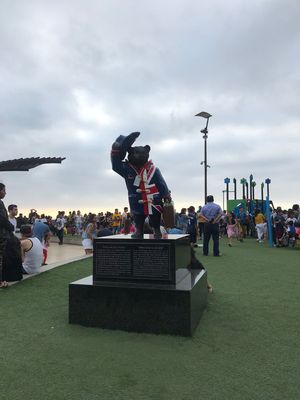
Talking of those overhyped top 50 lists, there’s a little more competition in the high-end restaurant world. Lima does take the first, second, and eighth slots on this year’s San Pellegrino list of the best restaurants in South America (Maido, Central, Astrid y Gaston, respectively), but Santiago does have Boragó at number four. I’ll leave our restaurant reviews for another day, but let’s just say things didn’t turn out the way I expected there. Even if we ignore the ultra-high end, though, it’s noticeable how restaurants in Lima consistently came out cheaper and tastier than in Santiago.

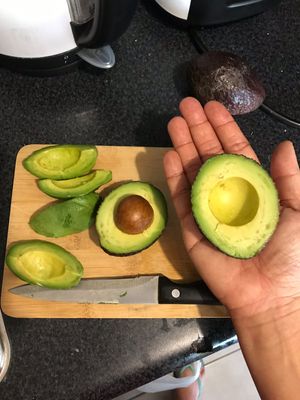
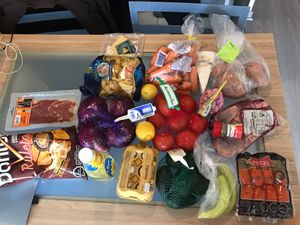
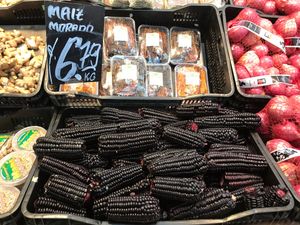

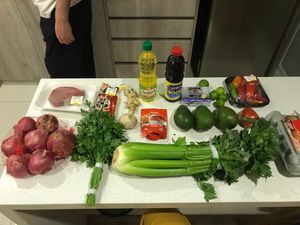
We were primarily self-catering in both cities, but ate very differently. Santiago offered us a wide range of enormous pieces of (Argentinian and Brazilian) meats at ludicrously low prices: that three-pound chunk of beef was around SGD 12, for example. Everything else wasn’t terribly exciting, though: the cheese selection was terribly sad, and it’s apparently impossible to buy milk that hasn’t been sterilised for a long shelf life. We did start eating huge numbers of avocadoes (which are palta not aguacate) of all varieties.
Lima had much more varied and interesting food. Our local supermarket had four kinds of potatoes plus one sweet potato, several kinds of corn, lots of chillies (both fresh and pureed in handy packets - the rocoto is one of our best discoveries), and several kinds of vegetable that we’d never seen before. The fish selection was fresh and varied, too - something that we didn’t see in Santiago. Chile definitely has more, better, and cheaper local wine, but I think it loses the age-old rivalry over who makes the best pisco.


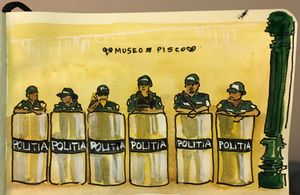
Lima’s colonial centre really shows how much treasure the Spanish plundered. The Plaza de Armas is huge, and surrounded by amazingly opulent buildings. One of them is the Government Palace, so there are often quite a few (remarkably friendly) riot police just hanging around in case they’re needed.
Did we like Lima more because we’d taken the time to relax in Santiago and got a bit more used to the way of life down here, and if we’d gone the other direction we’d think the opposite way? There’s definitely some truth in that: I have definitely become more confident in Spanish, and more comfortable navigating (I don’t want to go as far as saying “streetwise”). Susan found a language exchange group in Lima, which turned out remarkably well: we managed to speak some Spanish, and also made some friends who we went out for a drink with after we came back to Lima from Cusco. These groups probably exist in Chile, but we didn’t seek one out. I definitely didn’t have the psychic energy to go and speak bad Spanish to somebody then, for sure. Maybe that’s the important thing to notice: not how different places are, but how passing through different places changes you.